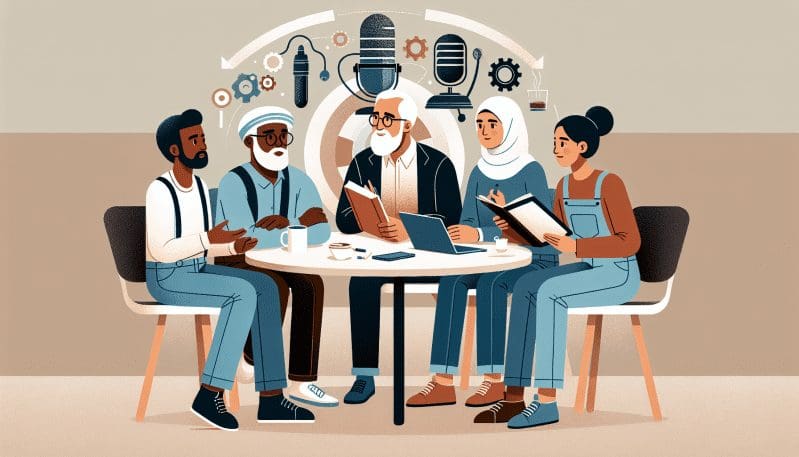The Evolution of the American Workplace: A Conversation with Labor Historians
- Home
- The Evolution of the American Workplace: A Conversation with Labor Historians

- Editors Desk
- April 3, 2024
- 0 Comments
The American workplace has undergone a seismic shift over the past century. From the rise of industrialization to the dawn of the digital age, the way we work has been transformed by a confluence of factors that have reshaped the economic landscape and redefined the very nature of labor. In this comprehensive interview, we sit down with a panel of esteemed labor historians to unravel the complexities of this evolution and to probe into the heart of the work, worker, and workplace dynamics.
We begin our journey by examining the early 20th century, a time when the U.S. economy was largely industrial and unions were a formidable force advocating for workers’ rights. We discuss the landmark labor legislation of the time, such as the Fair Labor Standards Act and the National Labor Relations Act, and how these laws set the stage for workers’ rights and union power. Our historians elucidate on the golden age of unions and how collective bargaining shaped the prosperity of the post-war era.
As we fast-forward to the late 20th and early 21st centuries, we confront the advent of technology and its impact on the workplace. Our experts weigh in on the proliferation of automation and the Internet, and how these technologies have led to both the displacement of traditional jobs and the creation of new industries. They explore the complexities of the gig economy—a labor market characterized by the prevalence of short-term contracts or freelance work—as opposed to permanent jobs, and how this has altered notions of security and benefits for a new generation of workers. The ‘Uberization’ of work and the challenges it poses to labor law and worker protections are discussed at length.
Against the backdrop of these technological and economic shifts, the decline of union power comes under scrutiny. Our panel discusses the various factors that have led to a weakened labor movement, from changing labor laws and global competition to the rise of the service economy and changes in the political landscape. They underscore how these changes have impacted wage growth, job stability, and class inequality.
Furthermore, we dive into the demographic shifts that have reshaped the American workforce. We investigate the increased participation of women, the integration of minority groups, and the implications of an aging population. Our historians reflect on the impact of immigration policies and their influence on both high- and low-skill labor sectors.
As we contemplate these historical trajectories, we pose critical questions about the role of government legislation in both protecting workers and promoting economic growth. We examine current debates surrounding the minimum wage, healthcare, and the right to unionize in the gig economy. Looking ahead, our panel offers their predictions and insights on the future of work in America, considering the potentialities of artificial intelligence, remote work, and continued globalization.
This dialogue promises to be a riveting exploration of the American workplace and a contemplative look at the symbiotic relationship between labor history and contemporary work culture. This is essential reading for anyone interested in understanding where we have come from and where we might be heading in the world of work. Will we witness a revitalization of the labor movement? How will the next generation of workers navigate a rapidly changing economic terrain? Join us as we engage with these questions and more, offering a panoramic view of the American workplace through the discerning lens of labor history.

Leave A Comment